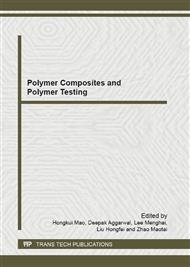p.376
p.380
p.384
p.388
p.395
p.400
p.405
p.409
p.414
Numerical Simulation of Three-Component Induction Resistivity Log
Abstract:
This paper shows enumerated electrical field is divided into primary field and secondary field according to two Maxwell circuitation equations combined with fact of induction resistivity log, and the primary field can be solved by analytic geometry method, the secondary field can be solved by finite difference Crisscross grid method. Finite difference Crisscross grid method is precise and advisable by means of comparing with analytic geometry method. Some formation factors such as relationship of log response and formation thickness, formation nonisotropy, formation penetration and measurement factors such as transmitter frequency, coil arrangement, coil span are simulated by finite difference Crisscross grid method.
Info:
Periodical:
Pages:
395-399
Citation:
Online since:
April 2012
Authors:
Price:
Сopyright:
© 2012 Trans Tech Publications Ltd. All Rights Reserved
Share:
Citation:


